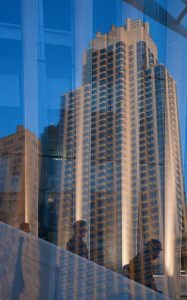I’ve been trying now for a while today, trying to locate the author of one of my favorite quotes, “Don’t let the low hanging fruit keep you from your goal”.
Nowhere on the information highway does it mention it. However, I did find an article that in a matter of speaking, is a metaphor that fits perfectly.
 “Pick the low-hanging fruit first”?
“Pick the low-hanging fruit first”?
In business, going for the easiest win first can mean a quick payoff, even if the fruits of your labor are, well, a bit misshapen. But according to 30-year apple-picking veteran Henry Rueda, starting with “low-hanging fruit” is a load of horse apples. Rueda says it’s common practice to pick trees from top to bottom so that the sacks of apples that pickers carry around their necks grow heavier as they work downward.
To pick the low-hanging fruit first would mean climbing against gravity with an increasingly heavy load—and also preventing heavily-shaded fruit from ripening. “Fruit that is high up, exposed to the sun, ripens the fastest,” adds USDA plant breeder Gennaro Fazio. “You want to pick the low-hanging fruit last, so it has more time to develop.” Using this phrase can make you look less than intelligent even though it’s one of the most common sayings.
So, my fellow photographers, what the hell does this have to do with the price of beans, a.k.a. photography?
In my online class with the BPSOP, and in my “Stretching Your Frame of Mind” workshops I conduct around the planet, I work on getting people to take a ‘Master’ shot first, then segue it to other ways to look at the same subject. In other words, you want to work your way down from the top.
The Master shot will help you stir up those creative juices; think of it as the oil to get your motor running. Once you do, then you can look at all the lower hanging fruit. One reason that immediately comes to mind is the quality of the light.
It would make sense that the subject near or at the top is going to have the brightest light on it. If you spend time at the bottom, you’re going to miss the light at the top. Chances are that there will also be light at the bottom so when you come back to it, it might be the softer, warmer light that memories are made of. Above all, depending on where you put it in relation to your subject, will make the difference between a potential wall hanger or a photo destined to fall on the cutting room floor….as in deleted!
Shooting the low-hanging subjects will (maybe) give you the quick payoff…instant gratification, but it won’t fill your basket (compact flash card) with choices. It’s the choices that will give you the best chance to go home with a photo you can put over your fireplace.
Joe Teaches:
Stretching Your Frame of Mind I
















